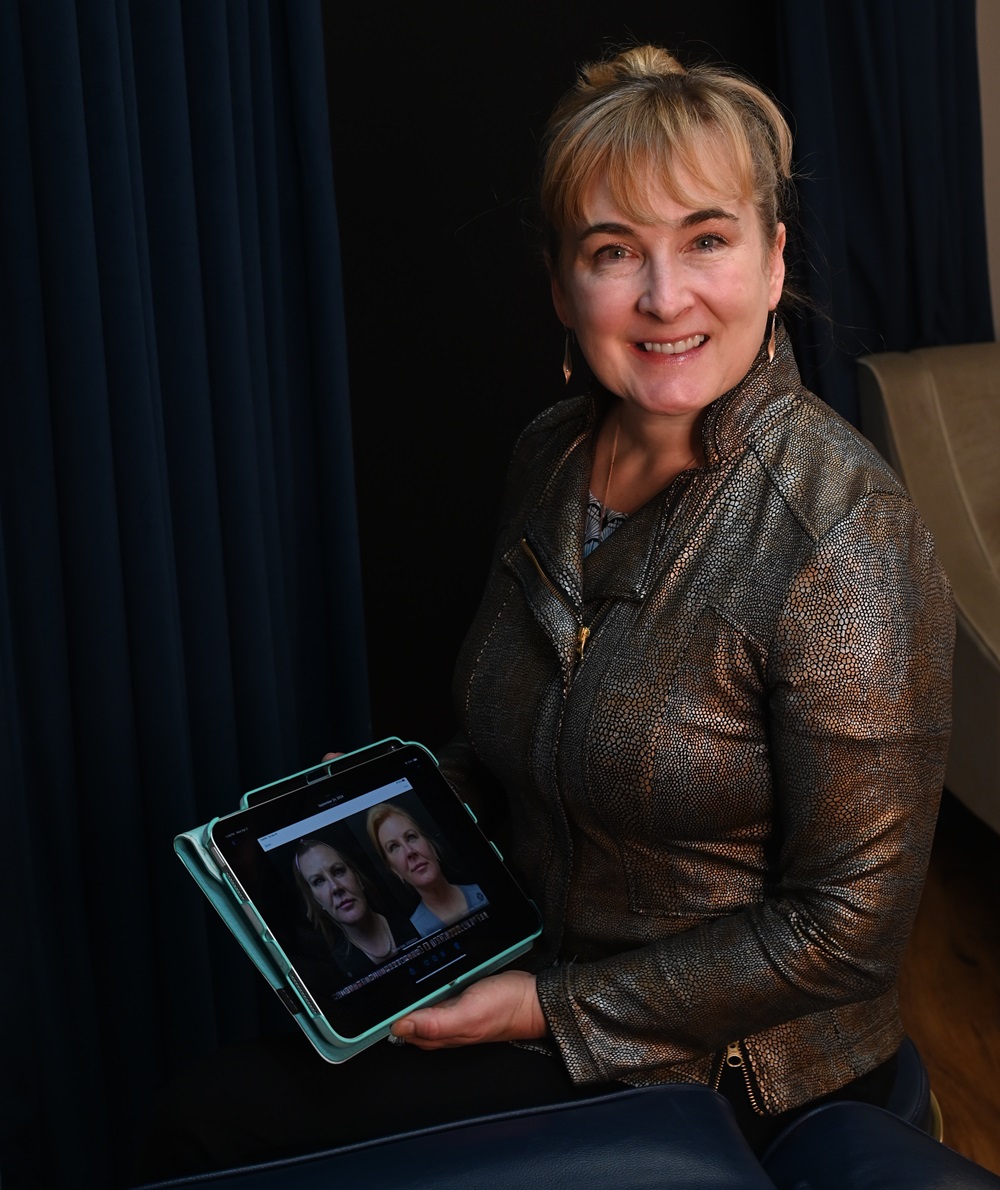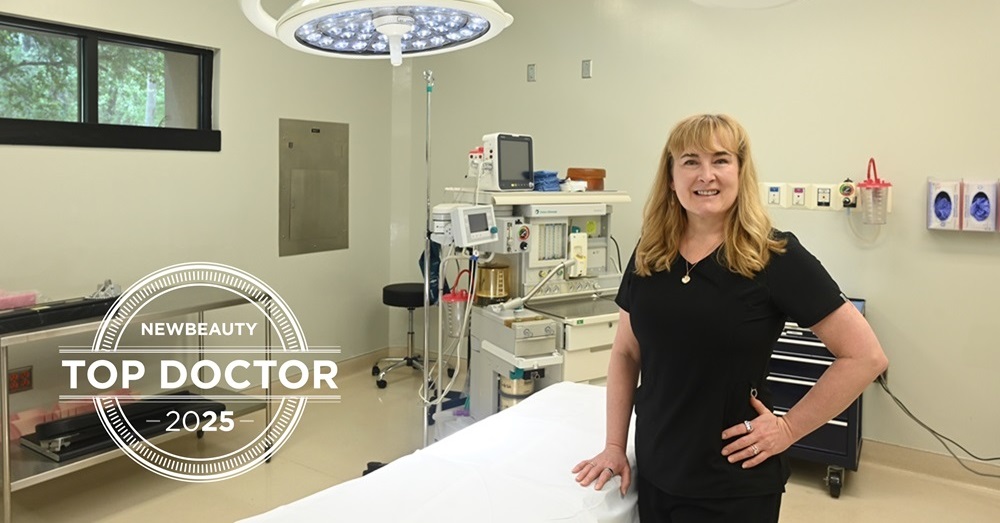Breast Revision Surgery
Dr. Meghan McGovern
Castle Connolly & NewBeauty Top Doctor Since 2025


Dr. Meghan McGovern
Castle Connolly & NewBeauty Top Doctor Since 2025
Breast Revision Surgery
Ideal Candidates: Women experiencing implant issues, asymmetry, or dissatisfaction with prior breast surgeries.
Benefits: Address implant concerns, restore symmetry, and achieve a confident, rejuvenated appearance.
Downtime: Recovery time varies; most women return to daily activities within 1-2 weeks.
Surgery: RenewalASC, Savannah.
Pre-Op and Post-Op: Savannah and Statesboro locations.
Cost: Consultation required to determine cost.

“
Breast revision surgery is a chance to rewrite your story, addressing issues with compassion and precision to achieve the results you deserve. My goal is to provide personalized solutions that restore both balance and confidence, ensuring that every patient feels supported and cared for throughout their unique journey.
– Meghan McGovern, MD
Body Procedures Offered by Dr. McGovern
Breast Revision Surgery: Fix What’s Gone Wrong
Over time, older breast implants can deteriorate and, as the decades pass by, you also lose the elasticity of your soft tissue. Dr. Meghan McGovern has a special interest in providing improvements that are the result of aging, loss of elasticity, and/or the deterioration of an implant’s integrity or position. Every patient is unique and deserves a customized approach to her concerns.
When to Get Breast Revision Surgery
Patients who have undergone either cosmetic or reconstructive breast surgery sincerely hope that the benefits they have enjoyed will last forever. Adults are, however, keenly aware that the process of aging is certain to take its toll on our youthfulness.
Loss of shape, symmetry, and volume are common issues for these women, and it is common for occasional revisions to be recommended. With a fresh approach and the desire for change, revision surgeries offer these patients an option for maintaining their autonomy.
Successful aesthetic procedures have their day in the sun, but eventually lose some of their luster. Fortunately, barring contra-indications, most prior cosmetic and reconstructive breast procedures can be successfully revised. These modest improvements can add additional years to the patient’s initial satisfaction.
Most patients seeking surgical revision have definable issues for which there are usually solutions.
Common Breast Issues (Cosmetic & Reconstructive Patients)
The following is a list of common problems women have with previous breast surgeries:
- Asymmetry
- Ptosis
- Capsular contracture
- Implant rupture
- BIA-ALCL
- Implant pocket distortion
- Inappropriately sized implants
- Scars
Asymmetry
Asymmetries of breast width, projection, volume, and shape are common complaints. First, understand that asymmetry is normal; no person is perfectly symmetrical. When the asymmetry reaches a personal threshold for the patient, they will consider revision surgery.
Treatment is based upon the root cause of the asymmetry and could necessitate changing the size of one or more of her implants and/or adjustment of the implant pockets. Other procedures used in the management of asymmetry include breast reduction, mastopexy (breast lift), and liposuction.
Ptosis
Asymmetries of breast width, projection, volume, and shape are common complaints. First, understand that asymmetry is normal; no person is perfectly symmetrical. When the asymmetry reaches a personal threshold for the patient, they will consider revision surgery.
Treatment is based upon the root cause of the asymmetry and could necessitate changing the size of one or more of her implants and/or adjustment of the implant pockets. Other procedures used in the management of asymmetry include breast reduction, mastopexy (breast lift), and liposuction.
Capsular Contracture
All breast implants develop a layer of surrounding scar tissue known as the capsule. This is a normal response to the presence of the implant and is usually of little consequence. If, however, the capsule becomes thickened and/or shrinks, then the implant will become progressively distorted and may become associated with pain.
The scientific community has not yet reached a consensus as to the etiology of capsular contracture and treatment for this condition is based upon severity of symptoms. A mild case of contracture might make the effected breast a little firmer to the touch and does not require treatment. In its severest form, the shrinkage of the scar tissue distorts the appearance of the breast and is associated with pain.
As a minimum, treatment for higher grade capsular contractures involves incision/excision of the capsular (scar) tissue and either removal or replacement of the existing implants. Unfortunately, patients who have developed significant capsular contracture in the past are at increased risk to develop a future recurrence, despite appropriate treatment.
Implant Rupture
Fortunately, implant rupture is infrequent. Sudden loss of volume from a saline implant is usually apparent within a few hours. Leakage from a silicone device may go undetected for a long time. Any sudden change in status with an implant should trigger a workup by the plastic surgeon. The breast MRI is a reliable tool to assess the integrity of a silicone implant.
FDA-approved silicone implants, available in the United States, are safe, excellent devices. However, they merit caution. After 15 to 20 years, a silicone implant will become old enough to have an elevated risk of leak or rupture. Older silicone implants should be electively replaced or removed. Saline devices may stay in place for as long as they are intact.
BIA-ALCL
Implants with textured surfaces have been associated with an extremely rare type of non-Hodgkin’s lymphoma known as breast implant-associated anaplastic large cell lymphoma (BIA-ALCL). It is recommended that patients with textured breast implants have them electively removed, along with the entire capsule (total capsulectomy) and appropriate diagnostic studies.
Implant Pocket Distortion
As the years pass, the weight of a breast implant (saline and silicone) will influence the local soft tissue. Gradual stretching of the boundaries of the implant pocket will allow the implant to move in a down-and-out direction. Thus, when lying on her back, this patient may sense that her breast implants move toward her armpits, resulting in a loss of cleavage. Downward stretching – or bottoming out – of the implant pocket takes the implant out of its optimal location leading to gradual loss of fullness in the upper portion of the breast.
Implant pocket distortion may be associated with breast implants of all sizes, albeit it is usually more severe in patients with excessively large implants.
Treatment involves surgically revising the pockets and replacement with new implants. When the outer and/or lower boundaries of the pockets are tightened, the new implants are returned to their optimal location. The appropriately sized new implant, stabilized in its newly remodeled pocket will give the patient superior performance.
Implant Pocket Distortion
As the years pass, the weight of a breast implant (saline and silicone) will influence the local soft tissue. Gradual stretching of the boundaries of the implant pocket will allow the implant to move in a down-and-out direction. Thus, when lying on her back, this patient may sense that her breast implants move toward her armpits, resulting in a loss of cleavage. Downward stretching – or bottoming out – of the implant pocket takes the implant out of its optimal location leading to gradual loss of fullness in the upper portion of the breast.
Implant pocket distortion may be associated with breast implants of all sizes, albeit it is usually more severe in patients with excessively large implants.
Treatment involves surgically revising the pockets and replacement with new implants. When the outer and/or lower boundaries of the pockets are tightened, the new implants are returned to their optimal location. The appropriately sized new implant, stabilized in its newly remodeled pocket will give the patient superior performance.
Inappropriately Sized Implants
Excessively large breast implants are associated with predictable problems, such as premature sagging of the breast, stretching of the skin, and internal distortion of the implant pocket. These factors contribute to malposition of the implant. This problem can be managed with the appropriate breast lift procedure, a pocket repair, and downsizing the implants.
Scars
Scars of any kind are seldom welcome on the female breast. Patients may be bothered by the scars from previous cosmetic breast procedures or something as routine as the removal of a mole or skin cancer. Most can be successfully managed with scar excision and thoughtful repair.
Summary
Most women enjoy excellent results from cosmetic and reconstructive breast surgery. However, periodic upgrades may be required. Each patient has a unique set of problems and after a thorough evaluation a coherent plan of action can be formulated.
Scheduling Your Consultation
Dr. McGovern will discuss your options during your consultation in one of our two Georgia offices (Savannah or Statesboro). Call 912.920.2090 or click the button below to schedule your complimentary and confidential consultation.











